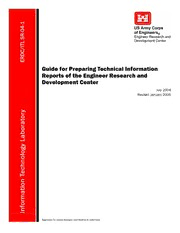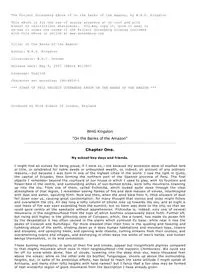
Alzheimer's Disease (Genes & Disease) PDF
Preview Alzheimer's Disease (Genes & Disease)
& GENES DISEASE ALZHEIMER’S DISEASE 1166441133__GG&&DD__AAllzzhheeiimmeerrss__44pp__aallll..ee..iinn11 11 88//2211//0088 44::4477::4433 PPMM GENES & DISEASE Alzheimer’s Disease Asthma Cystic Fibrosis Diabetes Down Syndrome Hemophilia Huntington’s Disease Parkinson’s Disease Sickle Cell Disease Tay-Sachs Disease 1166441133__GG&&DD__AAllzzhheeiimmeerrss__44pp__aallll..ee..iinn22 22 88//2211//0088 44::4477::4444 PPMM & GENES DISEASE ALZHEIMER’S DISEASE Evelyn B. Kelly, Ph.D. 1166441133__GG&&DD__AAllzzhheeiimmeerrss__44pp__aallll..ee..iinn33 33 88//2211//0088 44::4477::4466 PPMM Alzheimer’s Disease Copyright © 2008 by Infobase Publishing All rights reserved. No part of this book may be reproduced or utilized in any form or by any means, electronic or mechanical, including photocopying, recording, or by any information storage or retrieval systems, without permission in writing from the publisher. For information, contact: Chelsea House An imprint of Infobase Publishing 132 West 31st Street New York NY 10001 Library of Congress Cataloging-in-Publication Data Kelly, Evelyn B. Alzheimer’s disease / Evelyn B. Kelly. p. cm. — (Genes and disease) Includes bibliographical references and index. ISBN 978-0-7910-9588-1 (hardcover) 1. Alzheimer’s disease. I. Title. II. Series. RC523.3.K45 2008 616.8'31—dc22 2007051319 Chelsea House books are available at special discounts when purchased in bulk quantities for businesses, associations, institutions, or sales promotions. Please call our Special Sales Department in New York at (212) 967-8800 or (800) 322-8755. You can find Chelsea House on the World Wide Web at http://www.chelseahouse.com Text design by Annie O'Donnell Cover design by Ben Peterson Printed in the United States of America Bang NMSG 10 9 8 7 6 5 4 3 2 1 This book is printed on acid-free paper. All links and Web addresses were checked and verified to be correct at the time of publication. Because of the dynamic nature of the Web, some addresses and links may have changed since publication and may no longer be valid. 1166441133__GG&&DD__AAllzzhheeiimmeerrss__44pp__aallll..ee..iinn44 44 88//2211//0088 44::4477::5555 PPMM CONTENTS 1 Alzheimer’s Disease: A Brain of Clumps and Plaques 7 2 New Name, Old Disease 18 3 AD—Symptoms and Behavior 31 4 Meet the Human Genome 42 5 Finding Faulty Genes 53 6 The Answer Is in the Genes 63 7 In Search of Help 73 8 The Future of Alzheimer’s Disease 81 9 Ethical Issues of a Brave New World 91 Glossary 104 Bibliography 110 Further Reading 114 Picture Credits 117 Index 118 About the Author 126 1166441133__GG&&DD__AAllzzhheeiimmeerrss__44pp__aallll..ee..iinn55 55 88//2211//0088 44::4477::5566 PPMM 1166441133__GG&&DD__AAllzzhheeiimmeerrss__44pp__aallll..ee..iinn66 66 88//2211//0088 44::4477::5577 PPMM 11 ALZHEIMER’S DISEASE: A BRAIN OF CLUMPS AND PLAQUES “Those men won’t talk to me,” said 79- year-o ld Marsha Knight as she came in from her daily walk on the farm. “They would not talk. They just ran away.” Todd, Marsha’s son, was puzzled. He knew the work- ers on his Florida horse farm well, and he knew that there were no men in the area of the field where his mother had been. When Todd went out to check, he found only his thor- oughbred horses across the white boarded fence. Marsha thought the horses were men. She has a disease that robs her of her memory for faces and impairs her judgment. The disease is called Alzheimer’s disease. The nerve cells in her brain are dying. Jeannette and Andy Green built their dream home away from the city on a peaceful Florida lake. One afternoon as the sun was setting, Jeannette found Andy in the lake with only his head out of the water. Andy, age 50, has e arly-o nset Alzheimer’s disease, which can affect people even in their forties. He does not remember where he is or what he has done. Like other people with Alzheimer’s disease, he is prone to wander, especially at sundown. When Orlon and Susan Lott moved to Florida from New York, they dreamed of a life without shoveling snow. They pictured days of playing golf in their gated community. One 7 1166441133__GG&&DD__AAllzzhheeiimmeerrss__44pp__aallll..ee..iinn77 77 88//2211//0088 44::4477::5588 PPMM 8 Alzheimer’s Disease day Orlon found his wife’s glasses in the refrigerator and her car keys in the sugar bowl. One nippy day, he found her walking the streets of the community barefoot and clad only in her pajama top. Orlon’s wife has early-stage Alzheimer’s disease. WHAT IS ALZHEIMER’S DISEASE? Alzheimer’s disease (AD) is a condition in which the brain slowly shrivels and dies. Nerve cells in the brain stop work- ing, and brain signals that are essential for life do not function properly. Although some people believe that dementia and decline in the later years are inevitable, geriatricians—who study and treat diseases of older adults—strongly disagree. Alzheimer’s disease and other dementias are considered ill- nesses and are not part of normal aging. Alzheimer’s disease starts with mild memory loss. People with AD gradually lose judgment, thinking, and reasoning ability, or cognition. Personality and behavior change. The person may become anxious, agitated, and delusional. The progressive loss of intellectual abilities is called dementia. As the disease progresses, the individual needs help in all phases of life, including bathing, eating, and using the rest- room. Families and friends of people with AD are especially affected. Seeing their loved ones change from the person they once knew to a stranger is emotionally devastating. Although there is no cure for AD at present, hope is on the horizon. Advances in molecular biology and genetics are offering insights into causes that could lead to a cure or to preventive measures. Most scientists now agree that AD is a genetic disease. They have located the genes that may cause some kinds of early-o nset AD. Researchers through- out the world are working on connections between the envi- ronment and genetics in the many types of dementia. 1166441133__GG&&DD__AAllzzhheeiimmeerrss__44pp__aallll..ee..iinn88 88 88//2211//0088 44::4477::5599 PPMM Alzheimer’s Disease: A Brain of Clumps and Plaques 9 THE BRAIN AND AD The nervous system comprises the brain, spinal cord, and nerves that extend to all parts of the body. A normal brain really is not spectacular to look at. It weighs only about 3 pounds and has the texture of stiff, thick custard. Stu- dents looking at it for the first time are often amazed that FIGURE 1.1 The brain has three main parts: the cerebrum, the cerebellum, and the brainstem. The spinal cord relays information between the brain and the rest of the nervous system. 1166441133__GG&&DD__AAllzzhheeiimmeerrss__44pp__aallll..ee..iinn99 99 88//2211//0088 44::4477::5599 PPMM
The list of books you might like

Do Epic Shit

Atomic Habits James Clear

As Good as Dead

The Subtle Art of Not Giving a F*ck

Ernst Heiss - Bibliographie, Liste der beschriebenen und dedizierten Taxa1

Plan 2 CS Generator

by Christopher Gardner-Thorpe. Page 55 - Evolve360

Алгебра. 8 класс

DTIC ADA445281: Guide for Preparing Technical Information Reports of the Engineer Research and Development Center

Masters at Arms

An exact Lagrangian integral for the Newtonian gravitational field strength

On the Banks of the Amazon by WHG Kingston

Die Passivlegitimation im Arzthaftpflichtprozeß: Unter Berücksichtigung der Organisation der Krankenversorgung

La Négation : domaine anglais

Greek Government Gazette: Part 2, 1993 no. 465

Purdue University North Central General Catalog

Transient dynamics of linear quantum amplifiers

Anabasis

Cainiao Network

Joseph Andrews Vol I by Henry Fielding

2001 DC Code, Volume 8, 2012 Supplementary Pamphlet, 2001 Edition



